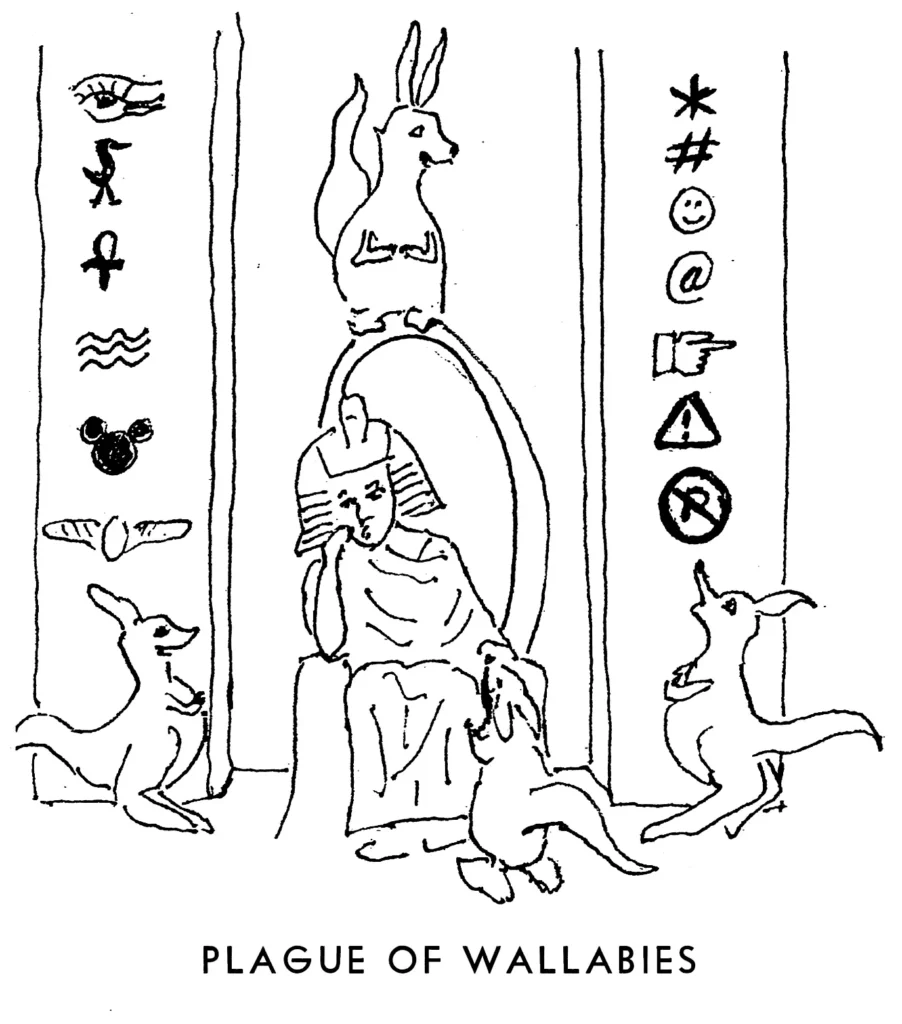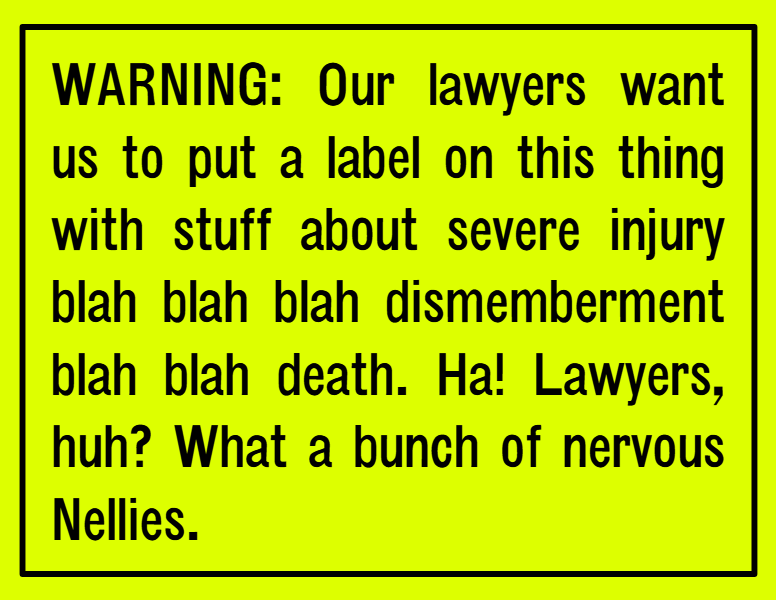Posts filed under “Art”
CALL FOR ARTISTS.
A VISIT TO THE ART MUSEUM.
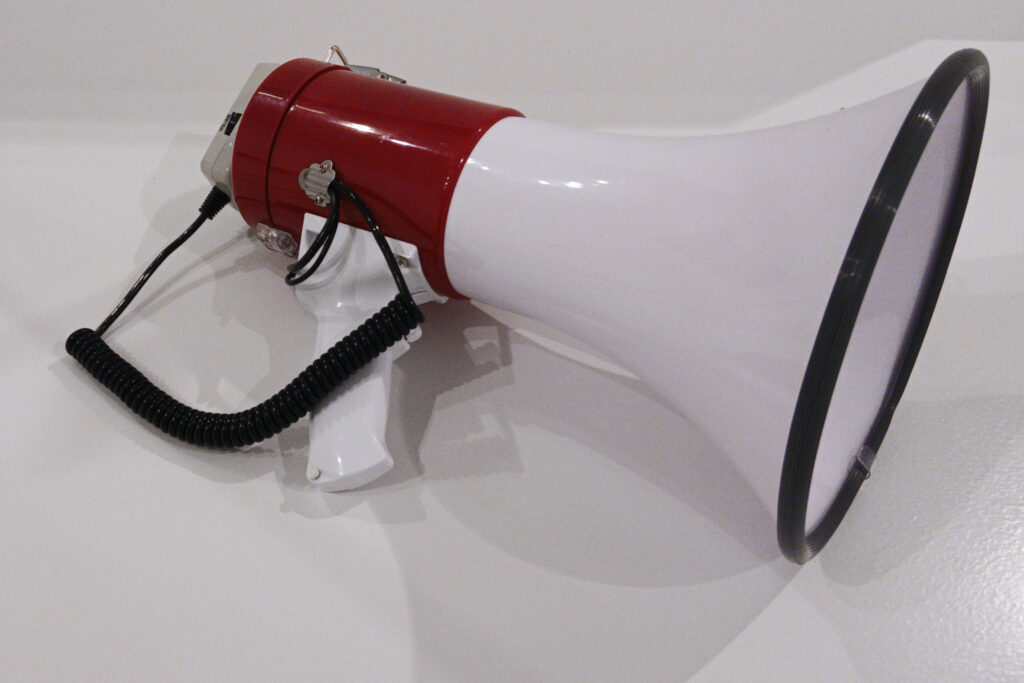
Ginger Brooks Takahashi: What Causes One to Break Their Silence, 2020.
As a work of visual art, it could be criticized. Perhaps the most telling criticism of it is that Dr. Boli feels perfectly confident in publishing this photograph of it here, because any court in the land would hold that the visual aspect of the work does not rise to the level of originality required to establish a copyright in the United States of America. Copyright law is a mess in many ways, but it has its uses in the field of art criticism.
But it is not merely a work of visual art. It also speaks. The wall plaque says that the sound lasts for eight minutes and thirty-six seconds, but that is a lie. The sound lasts forever. It loops back to the beginning and starts over. The thing never stops speaking. It is not egregiously loud; it speaks at a normal conversational volume. But it never shuts up.
What does it say? Well, it talks about smells a lot. “Sulfur… rotten eggs… rotten eggs… rotten eggs… sulfur… rotten eggs… rotten eggs… like burning plastic… sulfur…”
Perhaps if it did nothing else, it would qualify as surrealist poetry. But art that is open to interpretation is not known in the world of art today. The interpretation must be controlled by the artist, because the artist has an important opinion that you must not misunderstand. Therefore, the speaking bullhorn also gives us enough context to understand that it is talking about the characteristic smells of heavy industry. Then it begins a long informative lecture about tariffs on foreign steel and aluminum.
The entire gallery is filled with this chatter, and it leaks into the next gallery. The voice is not interesting: we assume it is the voice of the artist herself, and she has no rhetorical skill. She drones. Because it is sound, it cannot be escaped the way one would escape an ugly picture by turning one’s back on it. The only way to escape is to leave the gallery and go to a gallery far enough away that it cannot be heard. If you wanted to enjoy some of the other art in that gallery, which holds objects from a wide range of eras, then, the artist might tell you, tough.
Now let us examine another work in the same museum.
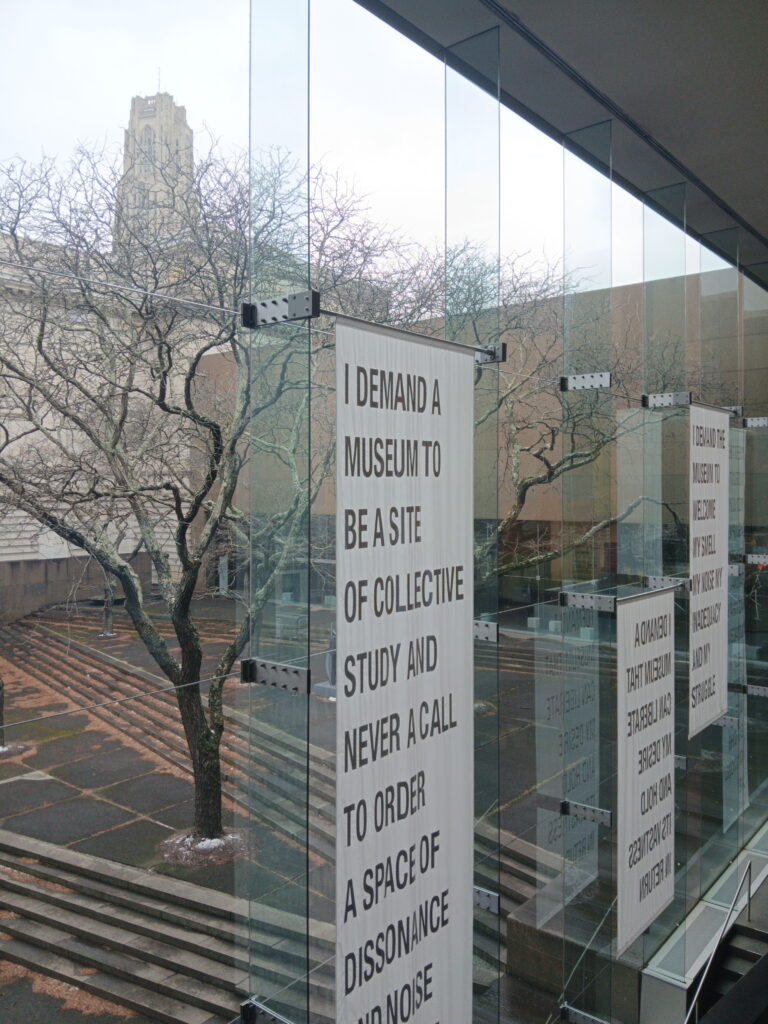
Andrea Geyer: Manifest.
These words, as words, probably do rise to the level of originality required to create a copyright, in the same way that a corporate memo does. However, the doctrine of “fair use” permits us to reproduce a section of the work for the purpose of criticism. The actual work is much more extensive, because there are several more of these plain white fabric banners with plain black gothic capitals on them. (The banners are the art; the glass around them is just the building, which was there before the art and will probably still be there when the next generation of curators repudiates this art as a public embarrassment.) Perhaps you think we deliberately chose the dullest and most unpoetic of the banners to make a point. We invite you to visit the museum and draw your own conclusions. The banners are all similar lists of “demands,” and they all have roughly the same message: my view of what a museum should be is the correct one, and you are a bad person if you disagree. The demands are not expressed in poetic or colorful language, and the banners have nothing interesting about them visually, so the art lies only in the opinion of the artist. There is nothing else to it.
Together, these two works form a complete encyclopedia of what “art” has become in the early twenty-first century: unadorned declarative text and a bullhorn. The message had become the most important thing by the end of the twentieth century, but now, in the twenty-first, the message is the only thing. Everything else that might distract from it, such as beauty or complexity or ambiguity, is eliminated.
If you complain that these things are not art, or are bad art, then the people in charge of Art will call you names and dismiss your opinion as worthless, because the opinion of someone who sticks black letters on white fabric is worth much more than yours is. But Dr. Boli has been around long enough to develop an immunity to insults, so he is willing to say what others will not say. This stuff is bad art. It is not beautiful; it is not skillful; it is not interesting; it is not even informative; but it is annoying.
It seems that all the rules about what is art and what is not art have been repealed. And before we complain and demand that the rules be reinstated, let us point out the positive side of the current state of things. Because there are no rules, we have yammering bullhorns, and we also have Bouguereau. Since Dr. Boli knows that some of his readers are particular lovers of Bouguereau, he will end his complaint with one of Bouguereau’s trademark impossibly scrubbed and callus-free farmgirls. You can see it at the Carnegie Museum of Art, just out of reach of the blabbering bullhorn: Faneuse or The Hay-Maker.
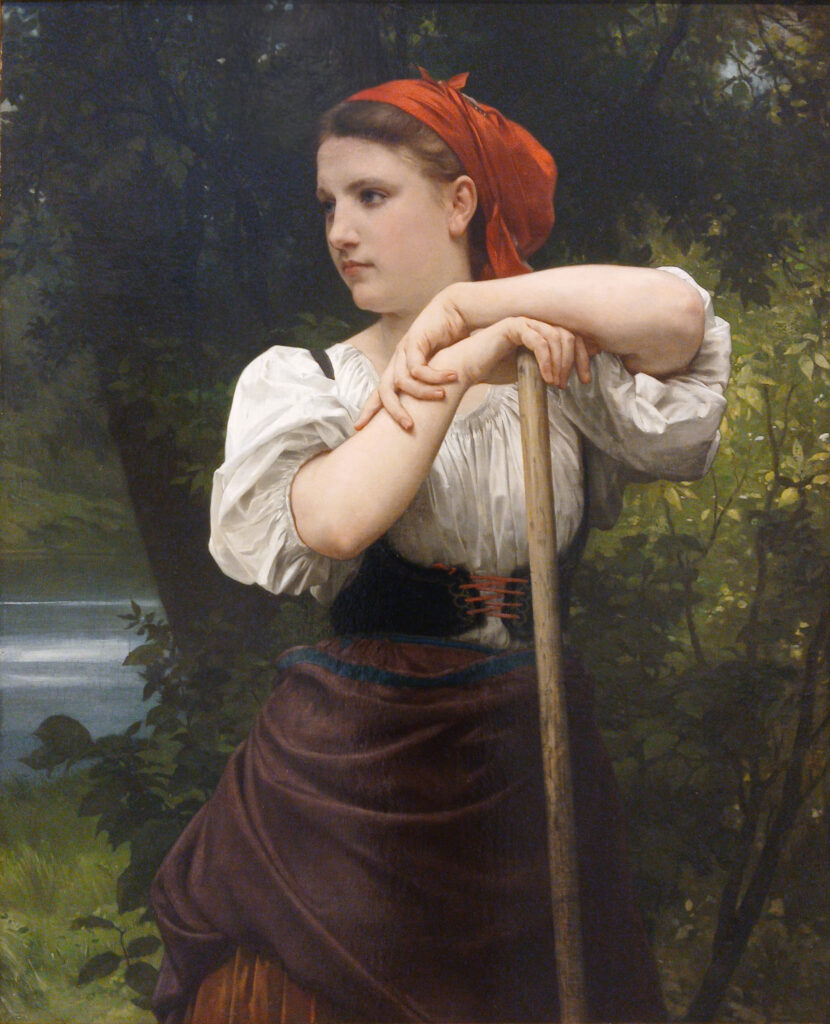
Meanwhile, let us give today’s artists the credit due them. Ginger Brooks Takahashi created a work called What Causes One to Break Their Silence, and it caused Dr. Boli to break his silence. Mission accomplished.
WHERE ART COMES FROM.
COMMERCIAL BEAUTY.

An illustration from a 1921 advertisement for Djer-Kiss face powders, talcs, soaps, etc.
You will find but few other places in the World Wide Web where such standards prevail. If there is advertising at all, it is usually either unpardonably annoying or ignorably bland.
Imagine yourself living in a world, then, where this could be written and taken seriously:
At present, the bulk of professional drawing in this country goes to advertise our wares—a state of things which cynics enjoy. The offset is that while we are undoubtedly cheapening art by putting it to “base uses,” we are at the same time giving an almost compensating charm to our commercialism, and are making sure that artists can live—at least on a par with other professions. An exhibit of advertising “originals,” without their propaganda for this or that talcum or talking machine, is a really excellent art collection. The worker has his own standards of excellence, not altogether for sale; and meantime, the good by-product of better advertising is a training of the public taste in art. (“Drawing” in Book I, Education, of The Volume Library, 1931.)
Yes, it was possible to say that in 1931 and neither laugh nor be laughed at.
Now think of our advertising here in the middle 2020s, and ask this one probing question: Does it work?
Undoubtedly some of it does. But to limit ourselves to the Internet for the moment, what is the most usual reaction to an advertisement? When a panel advertising Malt-O-Cod suddenly pops up over the thing you were reading, do you give it your undivided attention? Do you think, “Ho, good, here comes something beautiful and well-executed by an artist whose work will improve my taste if I devote some serious study to it”? No; you do what it takes to make it disappear, often without even knowing what it was advertising.
But suppose it began to be well known that most, or at least many, of these advertisements were works of art by artists who deserved our praise and attention. What would be the result? We would look forward to the advertisements. We would see them coming and rejoice. We would give them our attention and even notice what they advertised. We would buy Malt-O-Cod.
This seems to have been the theory of the advertisers of the first half of the twentieth century. To a large extent, furthermore, it seems to have been correct. People did remember those advertisements and the products they advertised.
So what can we do? Nothing individually, but together we can do everything. Pledge yourself now to make your buying decisions on the basis of one question: which of the companies I am considering supports beauty?
Marketers themselves may be immune to beauty. They may consider the artistic sense an unfortunate curse and take drugs to suppress it. But they are mesmerised by numbers. If we show them that beauty sells, then they will give us beauty, because beauty will cause large numbers to dance in their spreadsheets and activate the reward centers of their brains. It is easy to make the pledge, because it seldom deprives us of anything worthwhile: when we are choosing between two detergents or toothpastes, it is usually true that they both work perfectly well. We can make our choice as whimsically as we like. Start making your choices on the basis of beauty, and see how quickly the marketers start shoveling great steaming heaps of beauty in our direction.
IN ART NEWS.

THE LOST ART OF SHOWCARD WRITING.
These small signs were known in the retail business as “showcards.” Today they come in standard designs, printed by computer or industrial printer. But in the days before large chain stores and computer printing, it was simply not economical or expeditious to have showcards printed from type. Instead, they would be hand-lettered, by a professional if the store was a large operation, or by the shopkeeper himself if it was a small business. Where skilled labor is needed, correspondence schools will follow, and dozens of teach-yourself manuals of showcard writing were published in the late 1800s and early 1900s.

You could master the basics of showcard lettering in a few weeks at most. But if you wanted to set yourself apart from the ordinary run of half-educated clerks and make yourself into a truly valuable showcard-writer, you would learn the fancy tricks of decoration in the later chapters of these books, such as three-dimensional metallic designs.

But what will you write once you have the skill to form letters and decorate the spaces around them? Some of the books give suggestions for advertising phrases as well. For example, you might try a few homespun platitudes.
An Ounce of Underwear is Worth a Pound of Medicine.
The Sun of a New Prosperity is Rising Over the Hilltops of Discontent.
Laugh and the World Will Look at Your Teeth, and Judge of Your Taste—Good or Bad—By Their Condition.
Or you might appeal to the mathematically inclined.
Quality, Style, Finish—These Are the Four Cardinal Points of Excellence Which distinguish “Our” Clothing from All Others.
Note the early use of “quotation marks” for “emphasis.”
You might point out the superiority of your goods.
A Medley of Merit.
An Avalanche of Beauty.
Or you might allude to the extraordinary bargain to be had while supplies last.
A Cut to the Heart—A Tragedy in Prices.
Frost Nipped and All Shriveled Up Are the Prices.
As silly as some of these signs might have been, they did their job. And they probably did it better than the printed signs of today, which we ignore. Our printed signs are all alike: if you go into a Rite Aid, and then travel five hundred miles and go into another Rite Aid, you will see the same signs, and you will ignore them, because they are simply visual noise. But the hand-lettered sign is a personal communication from the merchant to you. There is only one sign like it; you will never see it again.
The art of lettering signs by hand is almost completely lost. As Dr. Boli has remarked more than once before, if a graphic designer wants text to look handwritten, she scours Google Fonts for a handwriting font that approximates the look she has in mind—as if there were no other way to create text that looks handwritten than by setting it in specially designed type.
But there’s good news. The art can be revived. You could learn it yourself from the same textbooks that taught the clerks of a century ago to become more valuable employees by mastering the art of the showcard.
As most of our readers have probably already guessed, there is a new page of Showcard Writing in the Eclectic Library.
ART OPENING.
SEPARATE OWNERSHIP.



